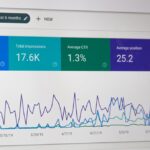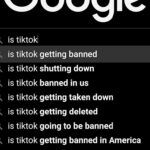Linktree has emerged as a popular tool for individuals and businesses seeking to streamline their online presence, particularly on social media platforms. By allowing users to consolidate multiple links into a single URL, Linktree simplifies the process of directing followers to various content, whether it be blog posts, merchandise, or other social media profiles.
However, while Linktree offers a straightforward solution, it is not without its limitations. One of the primary drawbacks of Linktree is its lack of customization options. Users are often restricted to a standard template that may not align with their brand identity.
This can lead to a generic appearance that fails to capture the unique essence of a brand or individual. Additionally, Linktree’s analytics capabilities, while useful, are somewhat basic compared to more advanced tools available in the market. Users may find themselves wanting more detailed insights into their audience’s behavior and engagement with their links.
Furthermore, the reliance on a third-party service raises concerns about data ownership and control, as users must trust Linktree to manage their traffic and analytics effectively.
Key Takeaways
- Linktree is a popular tool for optimizing social media links, but it has limitations such as lack of customization and branding options.
- Link optimization is crucial for social media success, as it allows users to showcase multiple links in one place and drive traffic to desired destinations.
- Creative alternatives to Linktree include using platforms like Beacons or Shorby, which offer more customization and branding options.
- Custom URL shorteners like Bitly or Rebrandly can help create branded, shortened links for a more professional and cohesive online presence.
- Landing page builders like Unbounce or Leadpages can be used to create custom landing pages for specific social media campaigns, driving more targeted traffic.
The Importance of Link Optimization for Social Media
In the digital age, where attention spans are fleeting and competition for engagement is fierce, link optimization has become a critical component of social media strategy. The ability to effectively direct followers to relevant content can significantly impact user engagement and conversion rates. Optimizing links not only enhances user experience but also ensures that brands can maximize their reach and influence across various platforms.
A well-optimized link can serve as a gateway to a wealth of information, products, or services, making it essential for brands to invest time and resources into this aspect of their online presence. Moreover, link optimization extends beyond mere convenience; it plays a vital role in search engine optimization (SEO) as well. Search engines favor well-structured links that provide clear pathways for users.
By utilizing optimized links, brands can improve their visibility in search results, driving organic traffic to their websites or landing pages. This is particularly important for businesses looking to establish authority in their niche or industry. In essence, link optimization is not just about directing traffic; it is about creating a seamless journey for users that ultimately leads to higher engagement and conversion rates.
Creative Alternatives to Linktree

As users become increasingly aware of Linktree’s limitations, many are exploring creative alternatives that offer enhanced customization and functionality. One such alternative is the use of dedicated landing pages tailored specifically for an individual’s or brand’s needs. These landing pages can be designed to reflect the brand’s identity while providing a comprehensive overview of available content.
By utilizing tools like Unbounce or Instapage, users can create visually appealing landing pages that not only house multiple links but also incorporate engaging visuals and compelling calls-to-action. Another innovative alternative is the use of social media management tools that integrate link management features. Platforms like Buffer and Hootsuite allow users to schedule posts while also providing options for link tracking and analytics.
This dual functionality enables users to manage their social media presence more effectively while ensuring that their links are optimized for maximum engagement. By leveraging these tools, brands can create a cohesive online strategy that encompasses both content creation and link management.
Custom URL Shorteners
| Custom URL Shortener | Features | Usage | Cost |
|---|---|---|---|
| Bitly | Custom branded links, analytics, link management | Popular among businesses and marketers | Free basic plan, paid plans available |
| Rebrandly | Custom domain, link retargeting, link management | Used by businesses and social media influencers | Free plan with limited features, paid plans available |
| TinyURL | Simple URL shortening, no account required | Commonly used for personal links and social media | Completely free to use |
Custom URL shorteners represent another viable alternative to Linktree, offering users the ability to create branded links that enhance credibility and recognition. Services like Bitly and Rebrandly allow users to shorten long URLs while also providing customization options for the link itself. This means that instead of sharing a generic link, users can create a memorable URL that aligns with their brand name or campaign theme.
Such customization not only improves user trust but also makes it easier for followers to remember and share links. In addition to branding benefits, custom URL shorteners often come equipped with robust analytics features. Users can track click-through rates, geographic data, and referral sources, providing valuable insights into audience behavior.
This data can inform future marketing strategies and help brands understand which content resonates most with their audience. By utilizing custom URL shorteners, brands can enhance their link management efforts while simultaneously building a stronger brand presence online.
Landing Page Builders
Landing page builders have gained traction as effective alternatives to Linktree due to their versatility and customization capabilities. Platforms like Leadpages and ClickFunnels enable users to create dedicated landing pages that serve specific purposes, such as promoting a product launch or capturing email leads. These builders often come with pre-designed templates that can be easily modified to suit individual branding needs, allowing users to create visually appealing pages without requiring extensive design skills.
The advantage of using landing page builders lies in their ability to integrate various elements beyond just links. Users can incorporate forms for lead generation, videos for product demonstrations, and even testimonials to build credibility. This multifaceted approach not only enhances user engagement but also increases the likelihood of conversions.
By directing followers to a well-crafted landing page rather than a simple link aggregator, brands can create a more immersive experience that encourages interaction and drives action.
Social Media Platform Integrations

As social media platforms continue to evolve, many now offer built-in features that facilitate link sharing and optimization directly within their ecosystems. For instance, Instagram has introduced features like the “Link in Bio” option and the ability to add links directly in Stories for accounts with over 10,000 followers or verified status. These integrations allow users to bypass third-party tools altogether by utilizing the platform’s native capabilities to share links effectively.
Additionally, platforms like Facebook and Twitter have also enhanced their link-sharing functionalities by allowing users to create posts with embedded links that automatically generate previews. This feature not only makes links more visually appealing but also encourages higher engagement rates as followers can see a glimpse of the content before clicking through. By leveraging these platform-specific features, brands can optimize their link-sharing strategies without relying solely on external tools like Linktree.
Dynamic Link Tools
Dynamic link tools represent an innovative approach to link management that allows users to create links that adapt based on user behavior or context. Services like Branch.io and Firebase Dynamic Links enable users to generate links that can lead to different destinations depending on factors such as the user’s device or location.
For example, a brand could create a dynamic link that directs mobile users to an app download page while sending desktop users to a website landing page. This tailored approach not only enhances user experience but also increases the likelihood of conversions by ensuring that users are presented with the most appropriate content for their situation. As brands seek to provide personalized experiences for their audiences, dynamic link tools offer a powerful solution for optimizing link performance across various channels.
Maximizing Your Link Potential
In an increasingly digital landscape where effective communication is paramount, maximizing link potential has become essential for individuals and brands alike. While Linktree has provided a convenient starting point for many users seeking to consolidate their online presence, its limitations have prompted the exploration of alternative solutions that offer greater customization and functionality. From custom URL shorteners and landing page builders to social media platform integrations and dynamic link tools, there are numerous options available for optimizing link management strategies.
By embracing these alternatives, brands can enhance their online visibility while creating engaging experiences for their audiences. The importance of link optimization cannot be overstated; it serves as a critical component in driving traffic, increasing engagement, and ultimately achieving business goals. As social media continues to evolve, staying ahead of the curve by leveraging innovative link management solutions will be key in maximizing reach and impact in an ever-competitive digital landscape.
If you’re looking for more tips on how to optimize your social media presence as an influencer, check out this article on how to make a great first impression online. It offers valuable insights on creating a strong personal brand and engaging with your audience effectively. Additionally, you can learn more about the latest trends in influencer marketing by visiting Influencer Database.
FAQs
What is a “Link in Bio” tool?
A “Link in Bio” tool is a service that allows users to create a single link that they can share on their social media profiles, which then directs followers to a landing page containing multiple links to various content or websites.
What is Linktree?
Linktree is a popular “Link in Bio” tool that allows users to create a landing page with multiple links to their content, such as websites, social media profiles, and products.
What are some alternatives to Linktree?
Some alternatives to Linktree include Shorby, Lnk.Bio, Campsite, ContactInBio, and Linkin.bio by Later. These platforms offer similar “Link in Bio” services with various features and customization options.
Why would someone use an alternative to Linktree?
Some users may seek alternatives to Linktree for additional features, customization options, or to support smaller or newer companies in the “Link in Bio” space. Additionally, some users may prefer the interface or pricing of alternative platforms.
What are some creative options beyond Linktree for “Link in Bio” tools?
Creative options beyond Linktree for “Link in Bio” tools include platforms that offer unique designs, integration with e-commerce platforms, analytics and insights, and the ability to add custom branding and graphics to the landing page.















